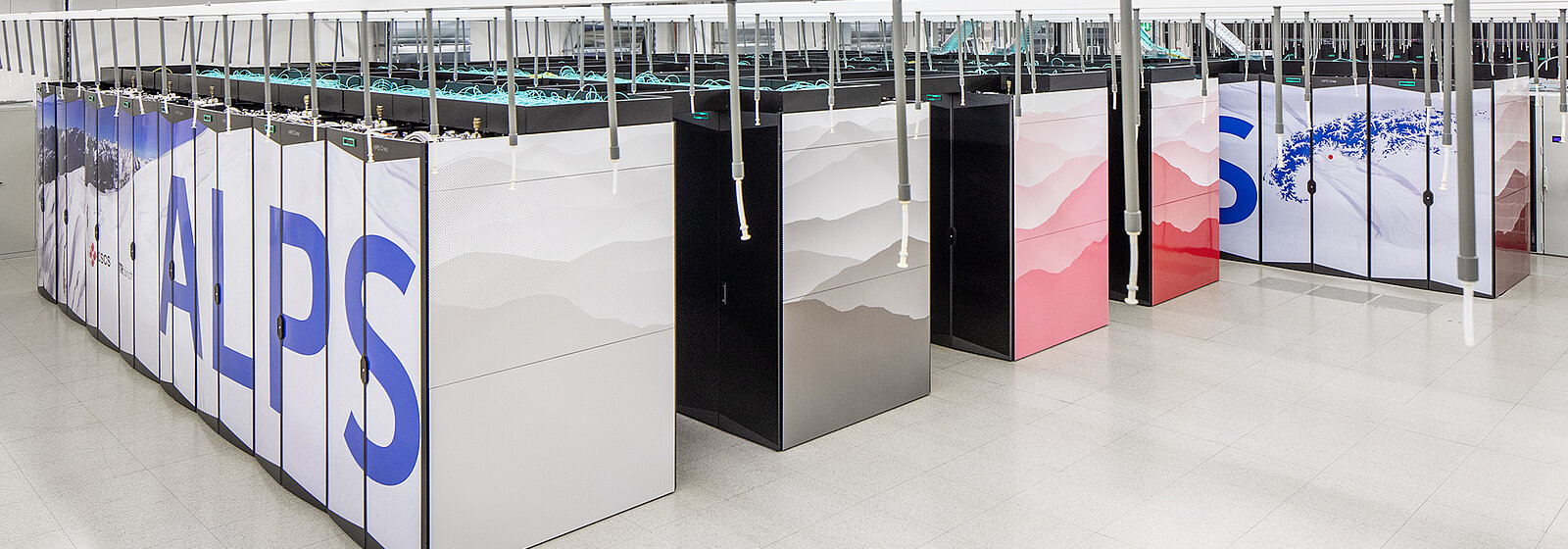August 28, 2025 – by Santina Russo
Recently, CSCS launched a new chapter in high-performance computing with its “Alps” supercomputer, which not only offers enhanced computing power but also unprecedented versatility to meet the requirements of different scientific communities. This versatility is exemplified by the launch of a new service: In Summer 2025, the Paul Scherrer Institute (PSI) became the first customer to use “Alps” in an infrastructure-as-a-service (IaaS) model.
PSI operates several large particle accelerators, including a neutron source, the synchrotron particle accelerator Swiss Light Source, and the X-ray free electron laser SwissFEL, which are available to research groups worldwide from diverse scientific fields. With the new IaaS platform on “Alps”, PSI’s computing power is now located remotely for the first time. “Alps’ cloud-inspired design makes it so versatile that it can meet the complex demands of tenants like PSI, which need to manage their own user communities,” says CSCS Director Thomas Schulthess.
The service runs on an isolated platform on “Alps” called Merlin-7, jointly managed by PSI and CSCS. “CSCS handles the infrastructure side, while PSI manages the platform, including the network, storage, and user operations,” explains Pablo Fernandez, Senior Business Development Manager at CSCS. “With this model, we are applying cloud service principles in a high-performance computing context,” he adds.
Despite PSI’s move to “Alps”, the user experience for most researchers at PSI remains virtually unchanged, says Alun Ashton, head of Science IT, Infrastructure and Services at PSI. “Thanks to two fibre-optic lines, each with a data transfer rate of 100 gigabits per second, it feels to our employees as if Merlin-7 is not at CSCS in Lugano but—as before—a stone's throw away from their PSI offices in Villigen,” he states. Configuring and operating the system for the approximately 90 research groups at PSI also remains entirely in the hands of Ashton's team.
Based on a long-standing collaboration
The service launch follows extensive preparation, with PSI and CSCS teams working closely together and mirroring each other’s workflows, says Riccardo Di Maria, a Senior Systems Engineer at CSCS and part of the project’s core team. He highlights the novel nature of this setup: “We had to allow for the network infrastructure to be provided by PSI, which is quite unusual and meant deploying CSCS services within the PSI network. This approach was a challenge with no prior experiences to rely on,” he explains.
The adaptable design of “Alps” also allows PSI to scale its computing resources, adjusting the number of compute nodes as needed. A crucial element of this setup is “Manta,” a secure software wrapper initially developed by CSCS specifically for PSI’s Merlin-7 platform. “This was a huge effort, but it was worth it,” Pablo Fernandez notes. The tool is already being adapted for other “Alps” platforms, showing its utility beyond this initial project.
The recent launch of the service is the culmination of years of joint efforts from both institutions. “We had to clarify our respective needs, explore different directions, overcome numerous challenges, and break a lot of ice in the process,” Fernandez explains. He sees this project as having implications beyond PSI and CSCS: “It represents a new way of thinking about infrastructure, with potential benefits for the entire HPC community.”
Read the story on this joint launch by PSI here.

